By Cali Storch
Author Archives: Antje Bitterberg
Ideas Travelling and Co-Creating with Paper
By Rachel Nelson

In my class ‘Program Development for Infants and Toddlers’ we started by reading “Drawing Together” by Sylvia Kind and Gabriela Neves (2016). Together as a group, we set up the tables forming a long straight line and laying out the paper. A classmate and I went hunting and gathering materials for a provocation, while the others found a soft gentle video to play in the background. The video was of bright fall colours oranges, reds, and greens running through a river filled with rocks that had weathered many storms. We had nature items in the center of the table along with beautiful drawing materials such as charcoal and wooden pencil crayons, we started to draw what came to us from this provocation; thoughtful materials that stimulated curiosities. Our thoughts as a class were “how can we sustain this inquiry and continue art on this giant piece of paper?”
I asked to bring this to my centre and continue with the children. Giving this project new ideas and curiosities. How would the children react to a paper that had art on it already? Would they add to it? Would they want a fresh untouched piece of paper? Would they crumple the leaves? Would they be curious about why there was nature inside the class with crayons? What new ideas could the children bring with this provocation?
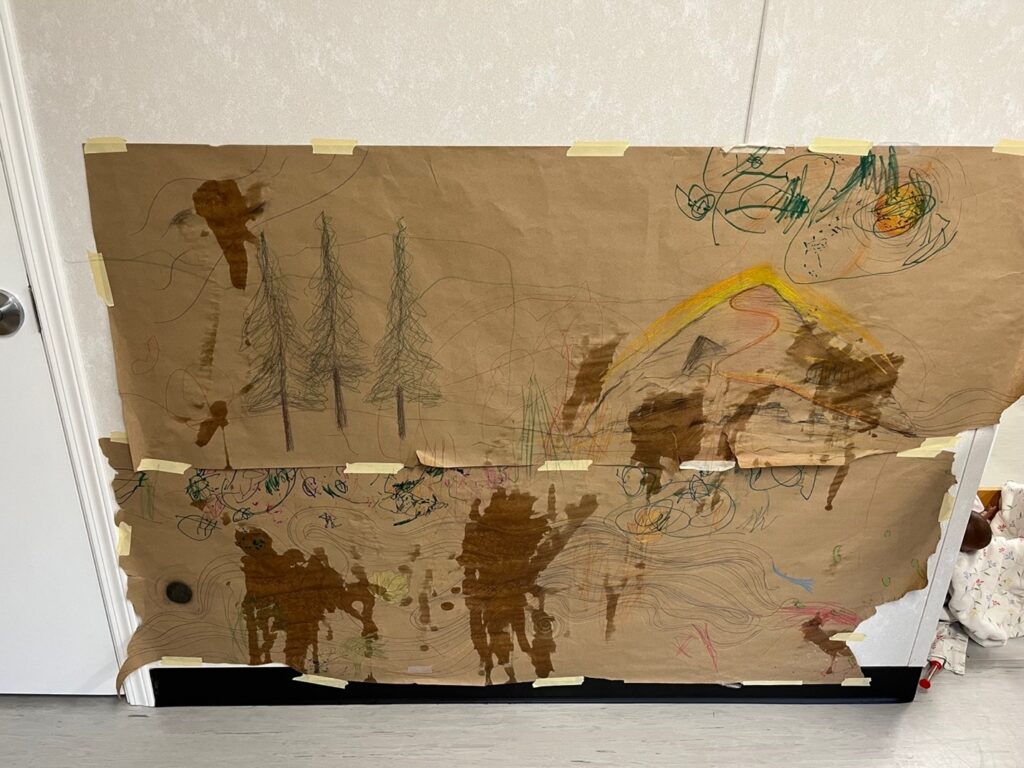
Over the weeks at my practicum the children experienced many provocations with this paper, we started by using it on the tables and eventually it was taped up on the wall. It became a part of our classroom. The children experienced using paint brushes with water, witnessing how paper dries and the different textures it creates, pencil crayons and markers being left out unprovoked so the children could choose if they wanted to make art during free play, painting with their hands and feet, reading by the paper, and many conversations with other educators on ideas around the paper. This paper became alive with university students’ stories and children’s stories. It was a place for free expression of art, and no expectations on how it should look or a final product.
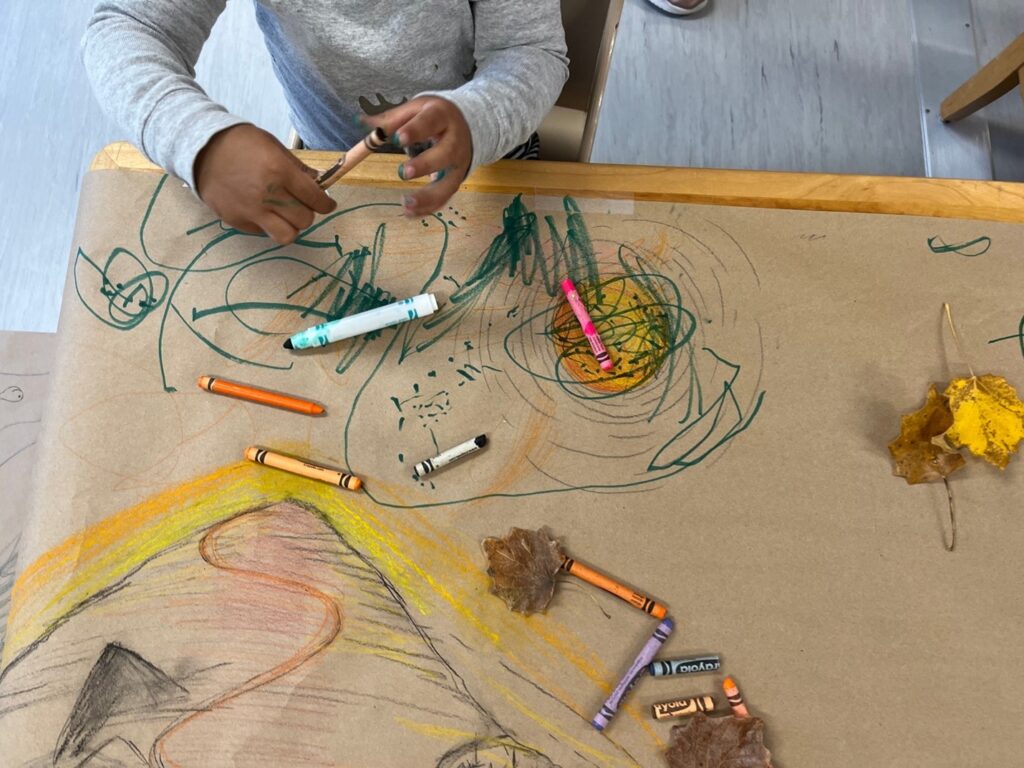
The materials were woven together between classes to sustain this inquiry, flowing to and from my centre and university, I had to let go of my expectations of what the paper should look like and release the urge to guide the children. My actions have an impact on how the children learn, and this was a big learning curve to just allow what’s happening to happen, even if the paper gets torn, messy, and stomped on. Letting go of my expectations for children’s processes, the beauty was right in front of me exploding on this piece of paper. BC ELF (Government of BC, 2019) states, “how can each child contribute their gifts in relationship with adults and other children” (p.73). Each child had a different way of connecting to the paper and with each other. We extended art over months, adding layers of curiosity and stories to the paper.
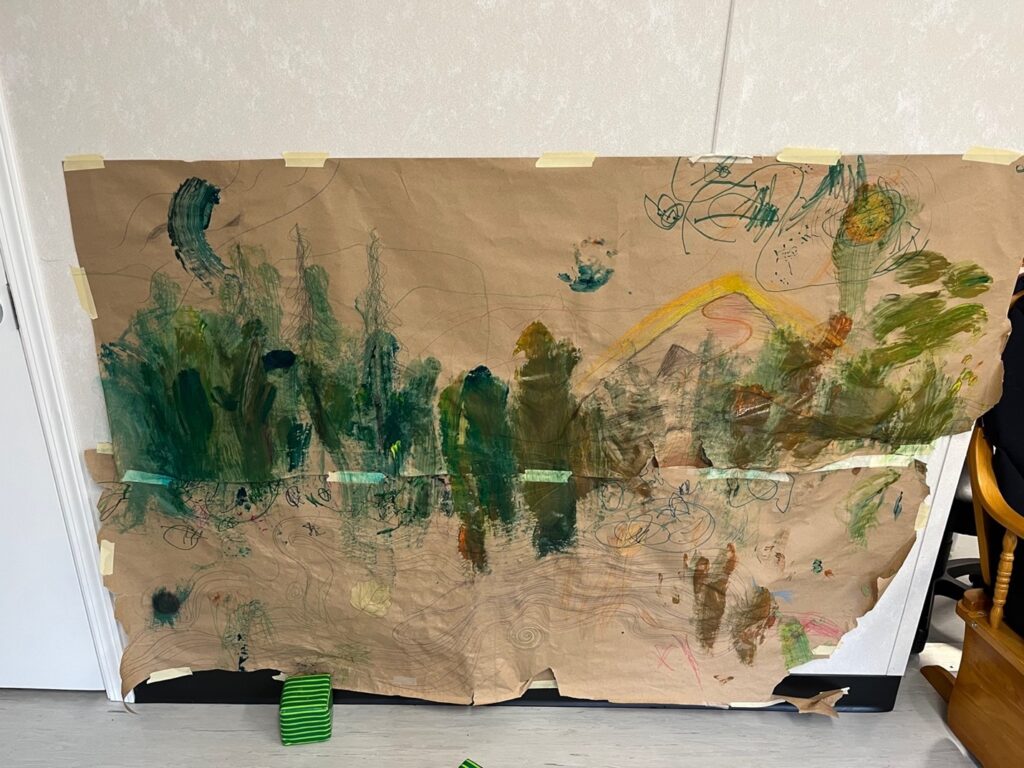
References
Government of British Columbia (2019). British Columbia Early Learning Framework. https://www2.gov.bc.ca/gov/content/education-training/early-learning/teach/early-learning-framework
Kind, S. & Neves, G. (2016). Drawing Together. The Early Childhood Educator, Winter, 27-29.
Arbutus Tree
By Clover Burgess
Arbutus Tree Ocean breeze, Qaanlhp trees High upon a rocky outcrop. Robin and wren, making friends, Eating berries red, can’t stop. Winds will blow, bark will grow, Crimson peeling bark on top. Evergreen all seasons seen, Green leathery leaves will drop. Twisted branches, long and wild, Perfect for a place to stop. Build a nest, take a rest, Baby Birds soon will hop. Ocean breeze, Arbutus tree, High upon the rocky outcrop.
With children you might add these movements:
Arbutus Tree
Ocean breeze, Qaanlhp trees (Children stand like trees balancing)
High upon a rocky outcrop.
Robin and wren, making friends, (Children pretend to be bird eating berries)
Eating berries red, can’t stop.
Winds will blow, bark will grow, (Children blow like the wind)
Crimson peeling bark on top.
Evergreen all seasons seen,
Green leathery leaves will drop. (Children fall like leaves)
Twisted branches, long and wild,
Perfect for a place to stop. (Children make branches with their arms)
Build a nest, take a rest, (Children rest on the carpet)
Baby Birds soon will hop. (Children hop like birds on a branch
Ocean breeze, Arbutus tree,
High upon the rocky outcrop. (Children are trees once more)
Stones, leaves, & chalk pastels
By Rita Huang
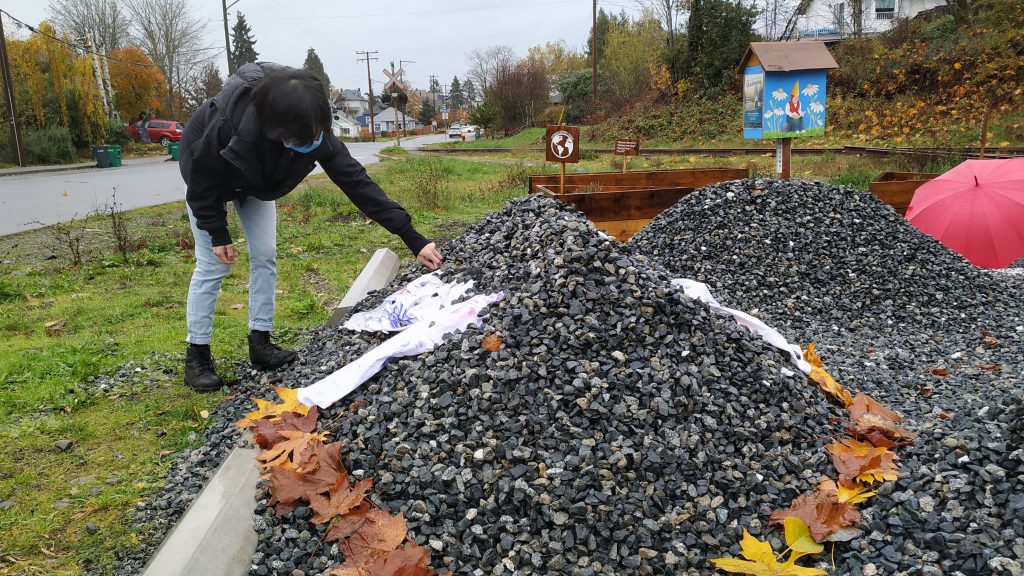
This morning, our pedagogist Antje arrived in front of our classroom to visit with us. The two of us walked down the road to a stone area, which is located at the end of a parking lot in our neighboring daycare program. The parking lot belongs to the train company and is a shared space in this community. There is a little wooden box with children’s books. Anyone is welcome to grab books from this little box and sit down on rocks or benches.
We spent time in this rock area
To see what we could do or create
We took a few minutes to stand under the rain
It brought energy and calmed us down
Time passed fast, leaves fell down from trees
We are almost at the end of the fall
I said, “ If we are only looking at the rocks, we won’t feel time changing, even thousands and thousands of years. However, when we see leaves as they lay down on the rocks, we know time is changing.” We illustrated this idea in this way with the stones and leaves:

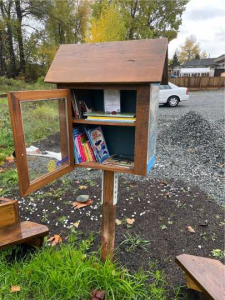
This library area is open to their neighbourhood. Antje shared an idea from one of my classmates: “I wonder what would happen if we put the BC Early Learning Framework here?” I was inspired by this idea. Perhaps we could offer a blog or a memory notebook beside the library, and share one of the Principles from Early Learning Framework, which uses the environment as the third teacher. People from this community and neighbourhood are welcome to sit down and spend time to share their thoughts on the blog or note book.
We decided to bring rocks from the stone pile to the centre, along with fallen leaves that we found on our way back. We moved the stones and leaves to the centre’s backyard. Children dressed for the rain and came with muddy bodies. We invited the children to sit around a table and told stories about this project to the children. We were going to play with chalk pastels, rocks, and leaves on a large sheet of paper. I was curious, ‘ What might the children create and how might they build a relationship with those fresh materials?’ We wouldn’t know at the beginning. I noticed some children saw the chalk pastels as a gift and chose their favourite colours and had fun on paper.

Thanks for reading!
References:
Government of BC. (2019) British Columbia early learning framework. Victoria, BC: Queen’s Printer.
Imaginary tour with my stone
By Kozue Rathe
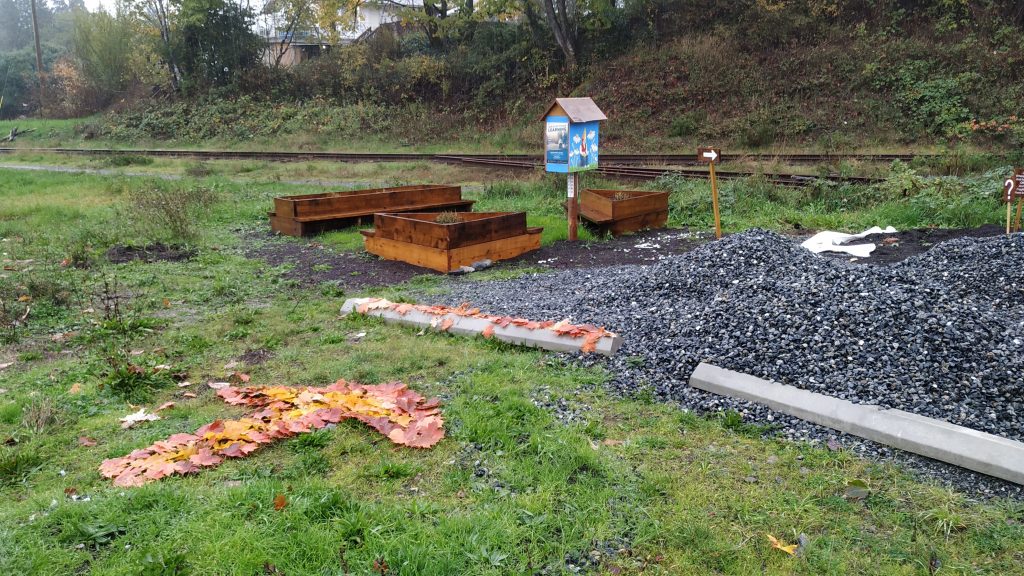
On a rainy Saturday morning my colleagues and I gathered at our children’s centre for an event called “strengthening our learning community through art as inquiry”. We started the day with the visit to the rock art exhibition in the neighboring parking lot. Our artist in residence, Michael, invited us to pick a stone to bring back as we were going back inside. I picked a small white stone with many black dots on it. I chose it for its small size and for the one shiny black spot that I noticed after I picked it up. As we got inside, I kept an eye on the stone while I tried to find a comfortable seating position. Michael who was leading the experience told us to lay down or get comfortable, then close our eyes in preparation for our imaginary tour around our neighborhood.
I sat with my eyes closed listening to the voice of Michael. The little stone was in my hands. The imaginary walk started at our children’s centre and took us in three directions: to a cliff, a nearby park, and a large rock. We were encouraged to feel the stone and talk to it at times. Whenever we paused for a moment, I asked the stone if it wanted to keep going. The answer was always “Yes” as it was a young stone with many pointy edges. I, on the other hand, am old (not that old) and smooth from going over the bumps of life. Throughout this imaginary tour, the rock stayed in my hand. I sometimes moved it around in my hands feeling the bumpy surface of it, or sometimes it just rested on my hand. By the time I opened my eyes as the imaginary tour came to an end, I had formed a relationship with the stone. It even looked like it had two dotted eyes and a small pointy nose.
While I was going through the tour, I thought of the children who were in my infant and toddler class. They come through the gate to our yard with one or more stones in their small hands tightly gripped almost every morning. There is also a child who comes with a piece of gummy which he never eats. While infants and toddlers often like to have things such as stones, toys, nuts, bugs, flowers, and food in their hands, they do not like to let them go. Although a piece of gummy from the breakfast could be too dirty to be eaten after one hour of outside play, it is still difficult for the child to let it go. I never thought of the fact the tight grip on a cereal, gummy or a rock was a sign of the relationship. The child has formed a relationship with the object in its hand and it makes it hard to open the hand to part with it. It could be because the cereal came from home where the child longs to go back, or the child feels the connection with his family or parents who he loves. A stone at the parking lot might have caught the child’s eye with a noticeable shine. Also, the roughness of the stone may give just the right amount of sensory stimulation on the soft palm.
In any case, any object can form a relationship with a child if a grownup who has not visited any imaginary world for a long time can have a relationship with a stone.
The experience with the stone gave me the opportunity to vision the world of imaginary play of children as well as the relationship between objects and children.
As I wrote this, my 6-year-old son wanted me to read the story I was working on. I read him the first two paragraphs, and he asked me if it was a true story. I said,” yes.” Then he wanted to see the stone I was writing about, because he wanted to see the spots that was shiny. He did not question about the fact that I was talking to the stone or the relationship between the stone and I. I felt as though I was allowed in a special place where it was filled with children and only chosen adults.
Collaborative Dialogue: Of Stones and Community-in-the-Making
Dear all,
With much delight we are sharing some traces from our Collaborative Dialogue event from December 1st, 2021. We look forward to continuing this series in the New Year and welcome your ideas for future events. In the meantime, to continue thinking with each other, we invite you to share your reflections as a response to this post.
Thank you for attending the Collaborative Dialogue #3- Thinking Education through Art(s). Using the music of the stones and the symbols of candles, an environment was created in which we, as educators could reflect, investigate and be provoked to deepen our understandings of others, of materials and of our world. We are grateful for the opportunity of having artist R. Michael Fisher join us last night and to open the conversation on how we can be curious to think with, question with and trust with, the arts / artists / pedagogists / children / educators / mentors / the non – human world and materials. You can view Michael’s online exhibition here: https://galleries.lakeheadu.ca/r-michael-fisher.html
Kozue shared of her relationship with the stone she picked and wondered about when the children come to us, holding a stone, a gummie candy, a toy, and their genuine relationship to this object. She reminded us to take notice of how a stone feels in hands, what it looks like, to think of our connection to the stone.
Rita shared her observations of what can happen when we ask the question of “what relationship will the children build, what will they create, when they can investigate and experiment with materials in a way that are meaningful the them?” She reminded us to consider how materials are presented. How do this invite experimentation and curiosity? To notice the contrast of colour between stones and leaves, the contrast of time.

Jennifer shared stories of neighborhood walks that take the children past the stone pile in their community. She brought in the voice of a child who excitedly shares on these walks: “That’s my neighborhood!”
In one break out room the discussion was on the inter-relationship of humans and natural environments. How can I encourage children to recognize that humans and the natural world are connected and mutually dependent on one another? (to read further questions, see page 90 of ELF). Only through ongoing inquiry of our connections to nature, to objects, can we engage with the children in their journey of “recognizing that humans and the natural world are connected and mutually dependent on each other”. (ELF pg.84)
Best and thanks to you all,
Cheryl & Antje & Juliet
Consider this inquiry into the stones. How did the protagonists engage in the process of pedagogical narration?
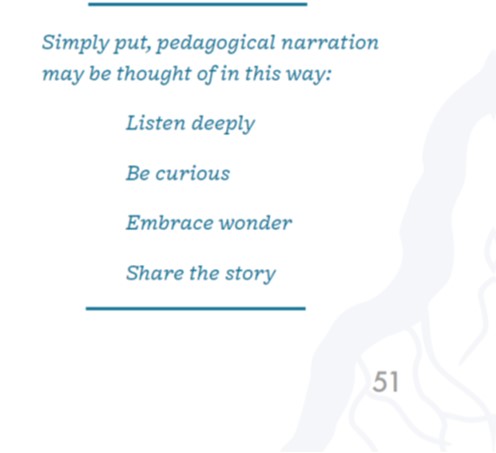
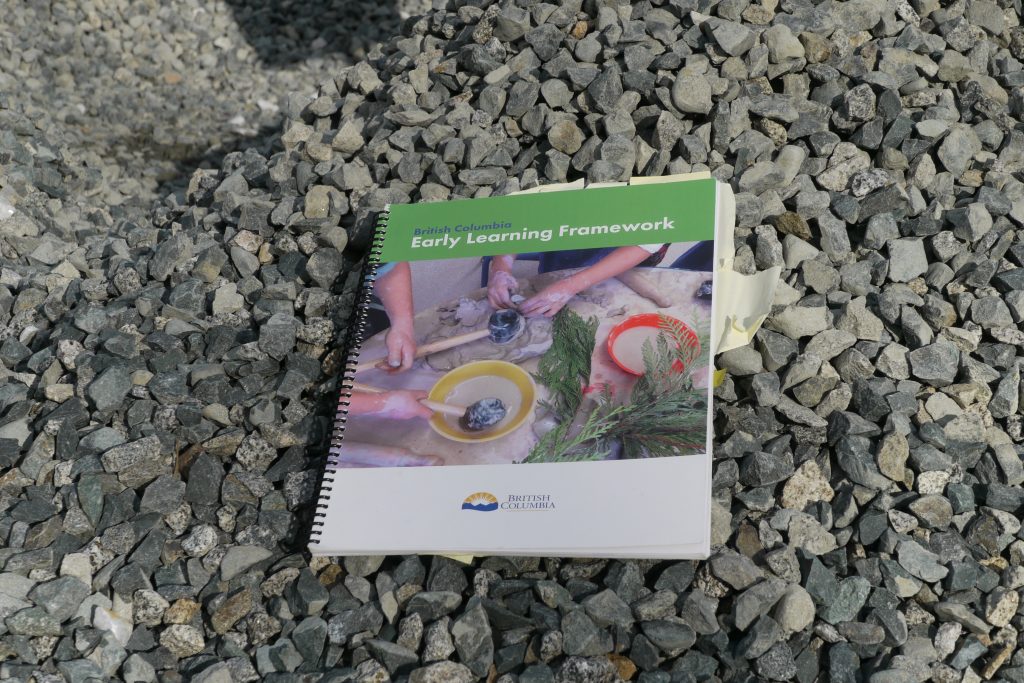
Conversation with Bryndís Gunnarsdóttir from Iceland
In this podcast we welcome our guest Bryndis Gunnarsdóttir who speaks about the Icelandic National Curriculum and the Icelandic context for playschool teachers. With passion, Bryndis also shares her research which examines friendship relations and social interactions in the toddler peer group in an early childhood education and care setting in Iceland using conversation analysis (CA). Throughout the conversation, we weave perspectives of early childhood educators/ playschool teachers, instructors, and students.
We welcome your thoughts and comments,
Antje, Selena, Patricia, and Bryndis
Warm and Welcoming ECEC Community
By Samantha Bremner
What an amazing feeling it is to meet so many of my professors and classmates in the ECEC program for the first time in person after being colleagues and friends online for over a year. The feeling of being in a real life classroom with all these wonderful people is unreal. Being in the same space has enabled me to feel the energy of the group during discussions, and be moved by others.
When I got accepted to the ECEC program back in the beginning of 2020 I was so excited to meet new friends who had similar interests as me! When I found out that the program was going to be online due to Covid 19 I was very upset and worried as I had never done any online schooling before. Throughout the year I was convinced that I would probably never get to meet all the beautiful faces that I’ve come to know as rectangles on my computer. This year proved me wrong and let me tell you I’ve never been happier to be proved wrong!
Everyone in our ECEC cohort is amazing. We are supportive, kind, friendly and helpful. Something I have also noticed is I find it much easier speaking out loud and sharing my thoughts in a classroom, because I have grown to know and trust everyone in the program. We are creating a place to be vulnerable, knowing we won’t be judged.
Being in a class with all these amazing people gives my mood and energy such a boost, unlike zoom where I unfortunately leave the class feeling a bit drained most of the time. Yesterday a few of us decided to stay on campus after our 270 class and get some lunch before our next class! We all went and got Subway and came back to the ECEC classroom to eat it. Afterwards the six of us joined the next zoom class as a group. It was a lot of fun hanging out and getting to know each other outside of class.I am nourished by interactions.
We are also a lot taller than I thought.
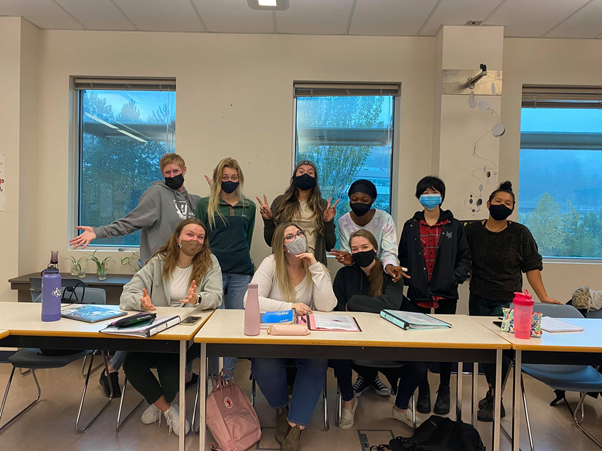
Car Wash
By Jill Adshead
Play is the highest form of research.
Albert Einstein
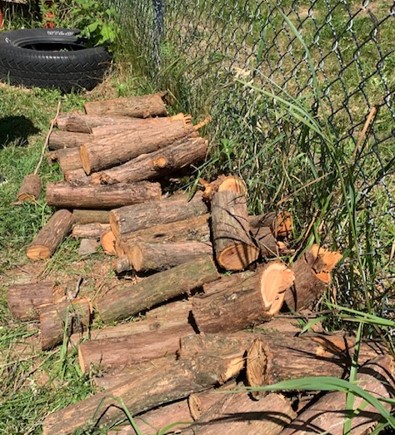
A pile of sawed off tree branches that were recently cut from a tree in the backyard.
Untouched, neatly stacked against the metal fence. The children walked by them but yet, no one showed interest.



I called over to J. “J, please come here. I have something to show you.” J ran over and looked at me standing directly in front of the logs.
“Want to build something out of these logs?” I asked. In a high-pitched voice, J excitedly said, ”Yeah!”
I asked him where we could put them. He scanned the area and focused on the tires. “There,” he pointed.
J, “I need you to help me build a track.” “Sounds like a great idea!” I answered. J’s friend R was nearby. I suggested to J that he include R in this build. J did so and they both eagerly took charge while I slipped into the background.
J, “We need them to go like that.” J and R began to line up the logs in a straight line. I found this interesting as I assumed the children would build a campfire because of the size of the logs.
J, “We need them to jump over these.” J points from from one end of the logs to the other while holding a matchbox car in the other.
R, “I want a tunnel.”
J, “Look! There’s two jumps!”
The boys continue with their build.

J, “I have an idea.” He doesn’t finish his thought but with a long sigh, “It won’t work though.”
J and R don’t conversate but are focused on their own project within their project.
R, “There’s an ant on it.” J goes to R, “Oh yeah, I see it.” R tries to catch it. J, “It’s black. The red ones are bad.”
I questioned, “What do red ants do?” J, “They bite you.”
J continues to build and R leaves the space. J does not ask him where he was going.
J, “This is going to be a carwash. It’s going to go fast, jump, jump and over to the other side.”


J asks if I could fill a watering can for him and I do.
J, “Thanks.”
J slowly pours the water over the car. He proceeds to get the car dirty in the dirt and washes it off with water. This is action is repeated.
J stands up, leaving his car and water on the ground. With his left hand on his chin, “This is what I do when I am thinking.” He walks in circles. J, “I’m thinking. This is what I do when I think.” With his left hand he taps his chin.
He walks back to his car and watering can. “Wash, rinse, rinse, dry.”
He continues, “How do we dry it off?”

At this point in time, I could have given a multitude of answers, but I wait. I say, “Great question! How do we dry it off?”
J stands up again with his left hand on his chin and walks in circles. “In the sun!” he exclaims.
He walks over and leaves the car on a wooden table to dry out in the sun.
J, “40 minutes to dry out in the sun. It will be done drying when we are done the track.”
Lingering questions
- How do I engage with children? When might I step in and when might I step back?
- “What kinds of questions do I ask about children’s engagements? How does my language reflect children as creators of theories? How do my questions reflect children as constructors of knowledge?” (ELF, p. 76)
- How could this play be extended? “What materials invite experimentation, problem solving, or intrigue?” (ELF, p. 77)
- What are the complexities of being an educator and researcher? What am I listening to? What matters to me? And what do I make visible in documentation?
- How are children involved in the process of working with documentation? What are some ways children can give permission to share the stories? Where do the stories live?
Reference:
Government of British Columbia. (2019). British Columbia early learning framework (2nd ed.). Victoria: Ministry of Education, Ministry of Health, Ministry of Children and Family Development, & British Columbia Early Learning Advisory Group. https://www2.gov.bc.ca/gov/content/education-training/early-learning/teach/early-learning-framework
Inspiring Pedagogical Narrations
By Heather Wilson
In the reading ‘The Educator I Once Was’ by Shannon McDaniel in the Early Learning Framework (Government of BC, 2019, p. 91-96), I wonder how much time and reflection took place before she felt able…
“… to be more spontaneous in the woods.”
I wonder about her initial anxiety and how she perceives that experience as her practice continues. Does she always think back to this memory and see the positivity in how far she has come? Or is she thankful for her apprehension, as it guides her more than it stunts her growth as an educator?
When she models her own curiosity by putting her barefoot in the mud, the educator and child experience, learn and grow together, and she captured it beautifully in her Pedagogical Narration.
McDaniel’s story connects me back to Ted Aoki’s (2004) article, ‘Teaching as In-Dwelling between Two Curriculum Worlds’, where he mentions, “… there is a forgetfulness that teaching is fundamentally a mode of being” (p.160). To me McDaniel’s role as an educator has gone far beyond a simple statement of, ‘taking toddlers into the forest’ but she lived her experiences with the children and with her colleagues.
The children saw her vulnerable on both occasions mentioned above. First, with her anxiety of her capabilities and the children’s’ in the woods, but by asking for help (from her colleagues) she models to the children what they might do if they are afraid. I wonder if she presented her fears to the children. What kind of outcome or solution would they present? Her second engagement with the toddlers, forest and mud was another moment of vulnerability. The educator is trying a new thing, pushing her comforts and exploring her senses and environment – just what we as educators are trying to give the children.
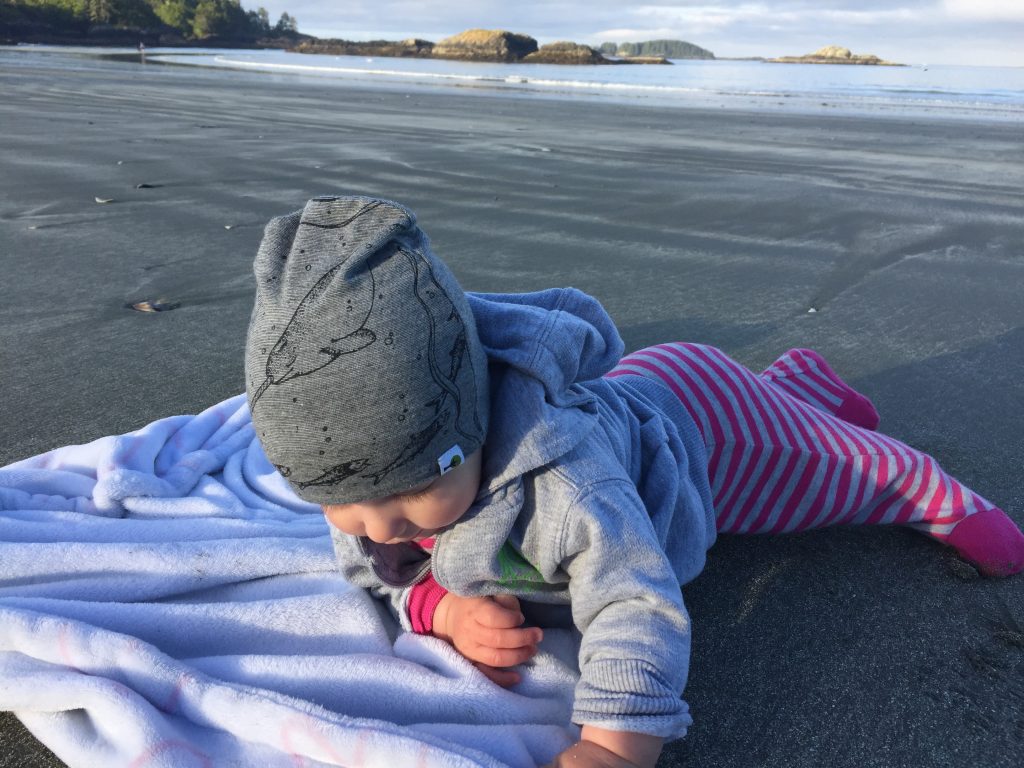
She presented an amazing example of modeling by just being true to herself. That cannot be taught in one lesson, it is taught in experiences, places and relationships.
References:
Aoki, T. T. (2004, 2011). Curriculum in a new key: The collected works of Ted T. Aoki (W. F. Pinar & R. L. Irwin, Eds.). Lawrence Erlbaum, Routledge.
Government of British Columbia. (2019). British Columbia early learning framework (2nd ed.). Victoria: Ministry of Education, Ministry of Health, Ministry of Children and Family Development, & British Columbia Early Learning Advisory Group. https://www2.gov.bc.ca/gov/content/education-training/early-learning/teach/early-learning-framework
